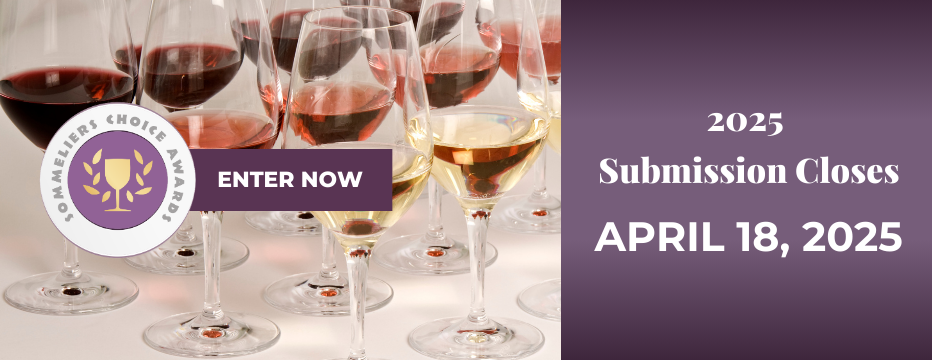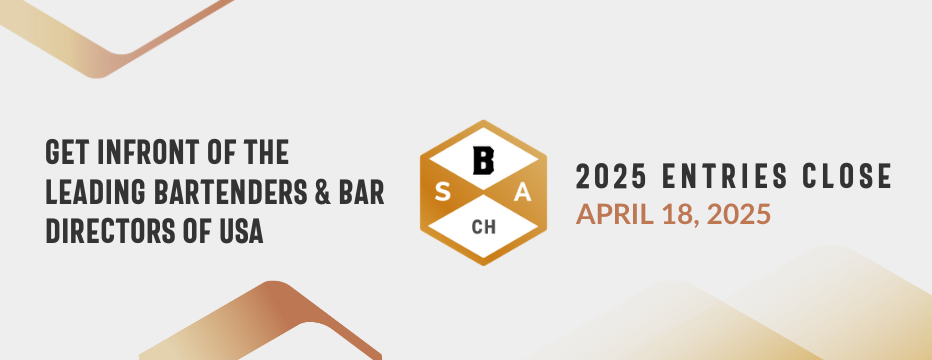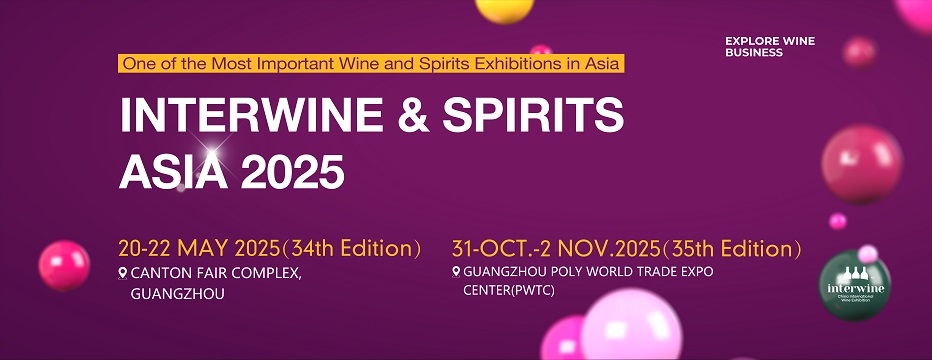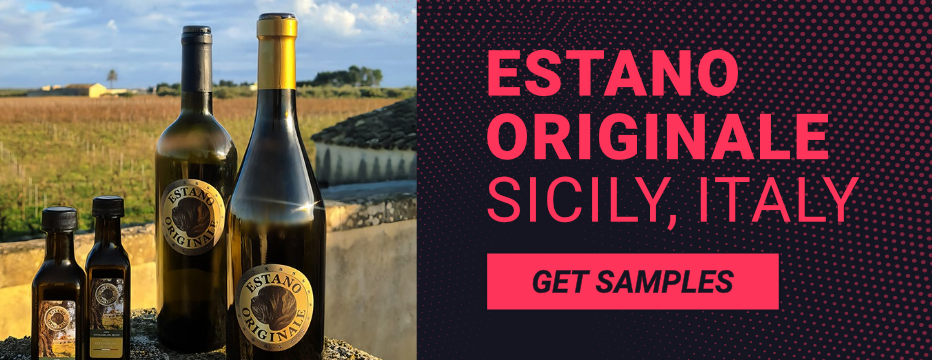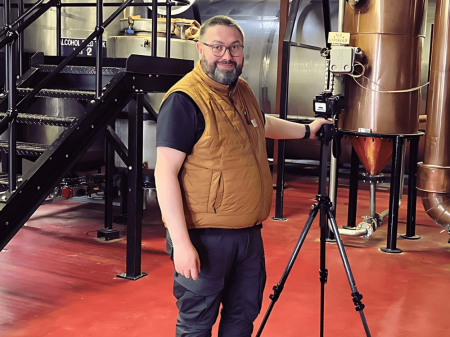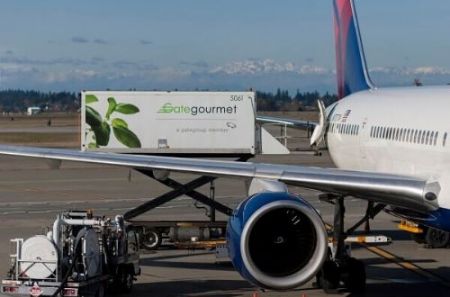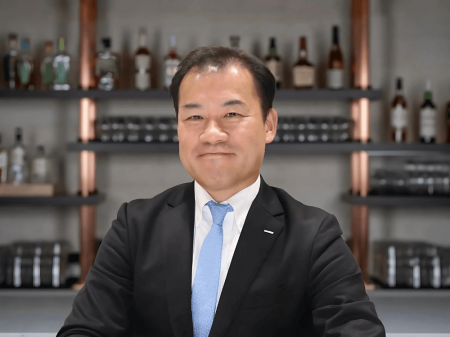Sommeliers Choice Awards 2024 Winners
Expanding Champagne’s Reach: Markets, Occasions, and the Consumer of Tomorrow
Champagne’s next frontier: Engaging a new generation of drinkers

In an evolving drinks landscape where younger consumers are shaping new preferences, traditional wine categories face the challenge of staying relevant while maintaining their authenticity. Champagne, one of the most iconic and prestigious wines in the world, is no exception. While discussions around low- and no-alcohol wines, alternative consumption occasions, and cultural trends are gaining traction, how does Champagne fit into this changing market?
Maxime Toubart, President of the Syndicat Général des Vignerons de la Champagne, shares his perspective on the future of Champagne. While he acknowledges emerging conversations around alcohol-free options and new drinking occasions, he emphasizes that Champagne's strength lies in its global opportunities rather than changing its fundamental identity. In this discussion, we explore how Champagne producers can expand their reach, engage with new generations, and collaborate with trade partners to sustain and grow the category worldwide.
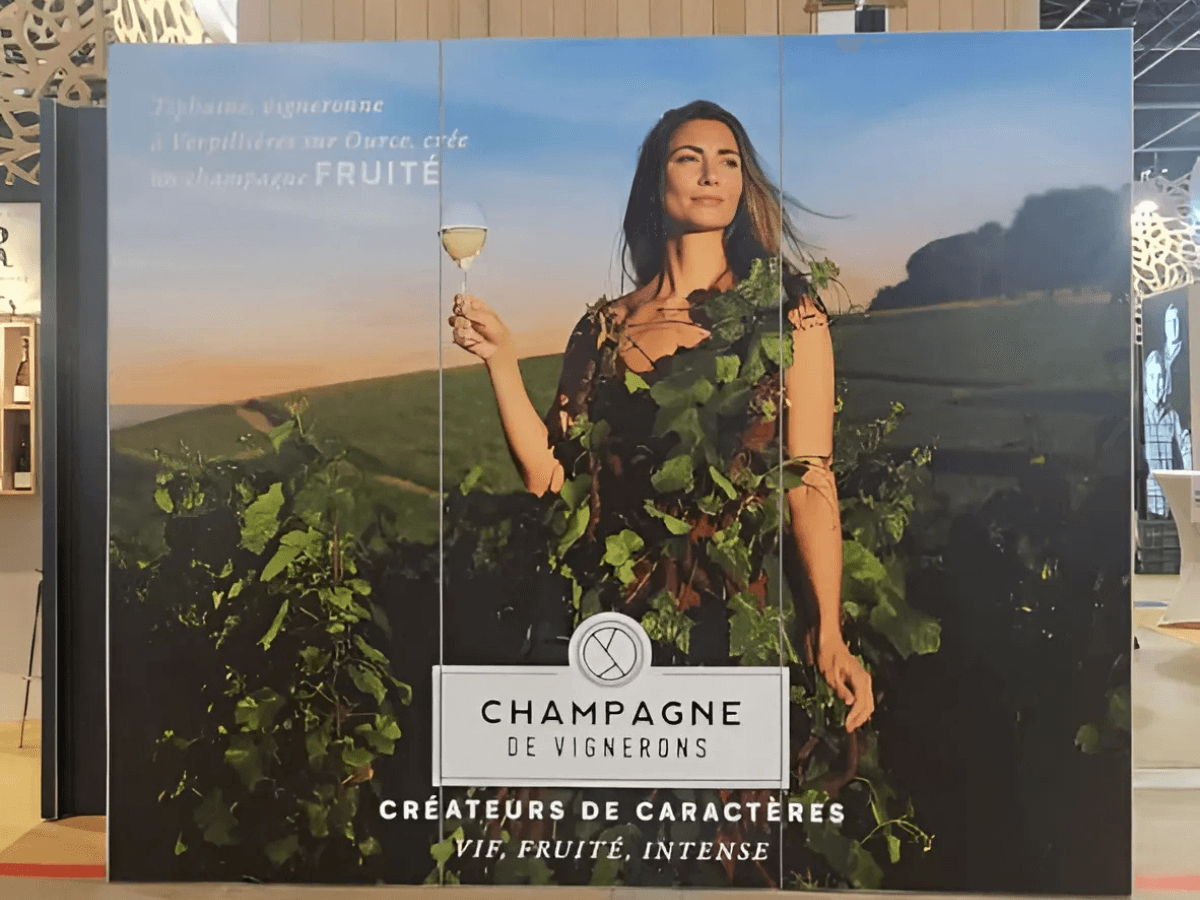
Image: Champagne de Vignerons at WineParis 2025.
Malvika: How is the Syndicat Général des Vignerons de la Champagne approaching the challenge of engaging with a younger, more diverse consumer base? Can you share specific examples of campaigns or strategies that have worked well?
Maxime: It's a good question. With low alcohol and no alcohol.
Malvika: Are you working with low and no-alcohol wines?
Maxime: No. But it's a question. We can see it becoming more and more of a subject, and today, I can say Champagne is Champagne. We have the same process and the same target. When you buy Champagne, it's Champagne, but now I've heard some people say maybe it's better to make a cocktail or less alcohol or no alcohol. Maybe in the future, we'll have to look into it. It would be good to increase our knowledge and brainstorm about this.
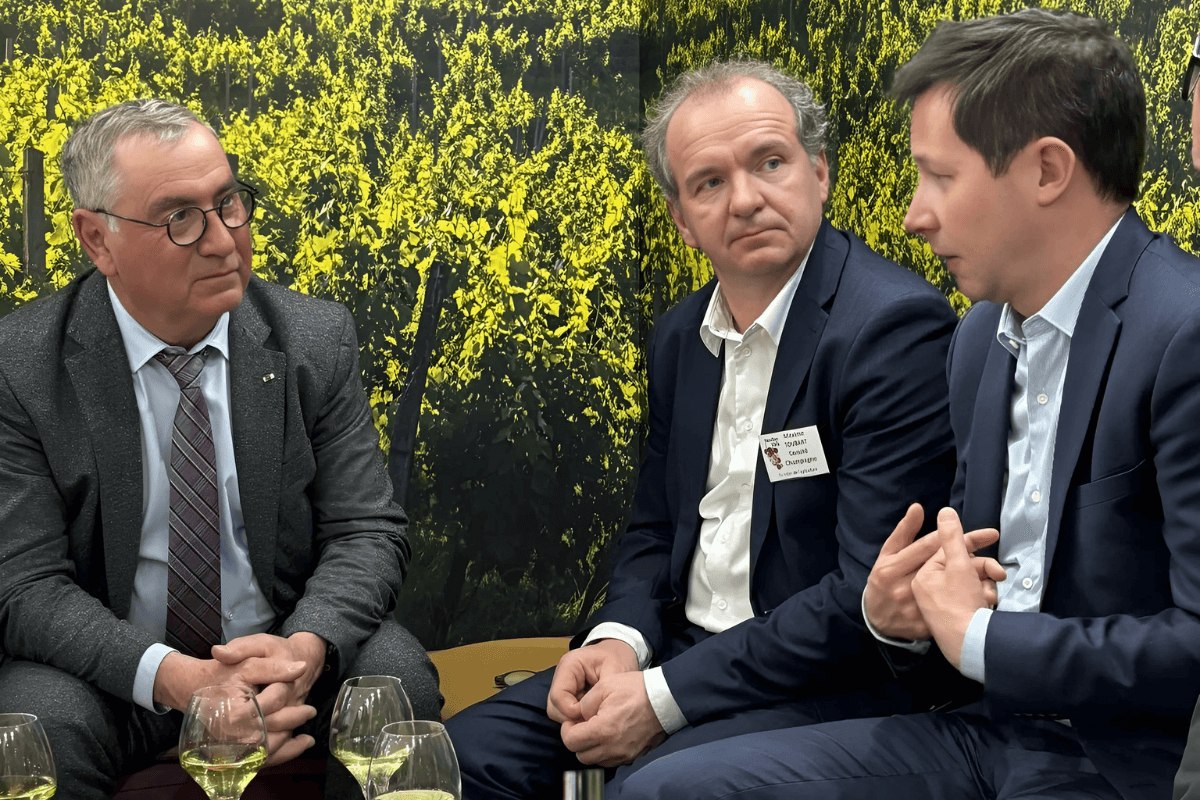
Image: Paris International Agricultural Show, 2025. (From L-R) Bernard Angelras, Maxime Toubart and Francois Xavier Bellamy.
Malvika: How is your association leveraging cultural trends, such as food pairings, art, or music, to enhance the appeal of wine?
Maxime: I don't know if Champagne is adapted for these kinds of activities. But it could be good to, I think... to speak about this and brainstorm. How can we have younger people, younger consumers?
We sell just 300 million bottles all over the world. We sell half in France. We have a lot of opportunities all over the world. Like I said, in South Africa. Maybe before changing the product, we look for new markets, new occasions.
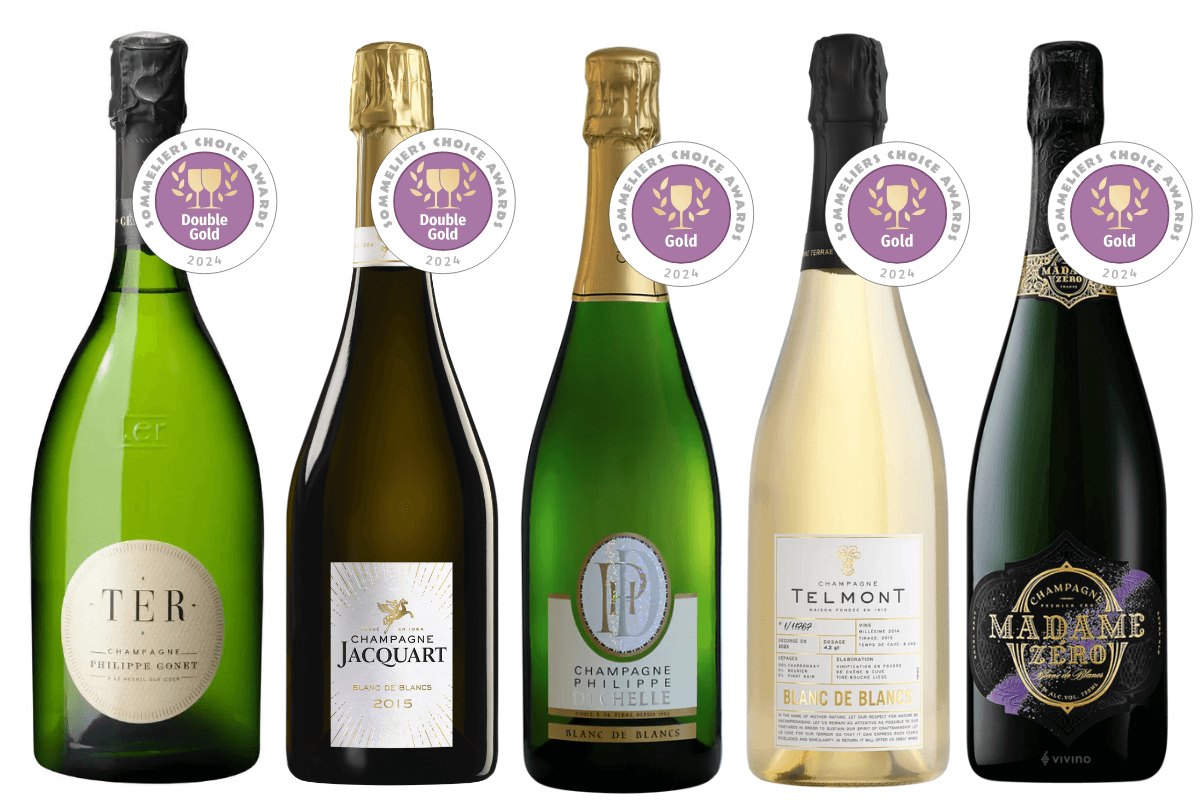
Image: 2024 Sommeliers Choice Awards winners from the Champagne region. (From L-R) Champagne Philippe Gonet "TER" Blanc de Blancs Extra Brut NV;Champagne Jacquart Blanc de Blancs;Champagne Philippe Dechelle Blanc de blancs 2014;Champagne Telmont Blanc De Blancs 2014;Champagne Madame Zero blanc de blanc.
Malvika: How can trade partnerships and collaborations help increase wine awareness and accessibility? Can you share examples of how your association is planning to work with the trade in 2025?
Maxime: Not the association, not the syndicate, but winegrowers, yes. Maybe, David (Chatillon). Please speak to David in this regard.
But I think it's really important to address the question of what happens with our consumers. Because the future is not what we are doing, but what we are going to do now.
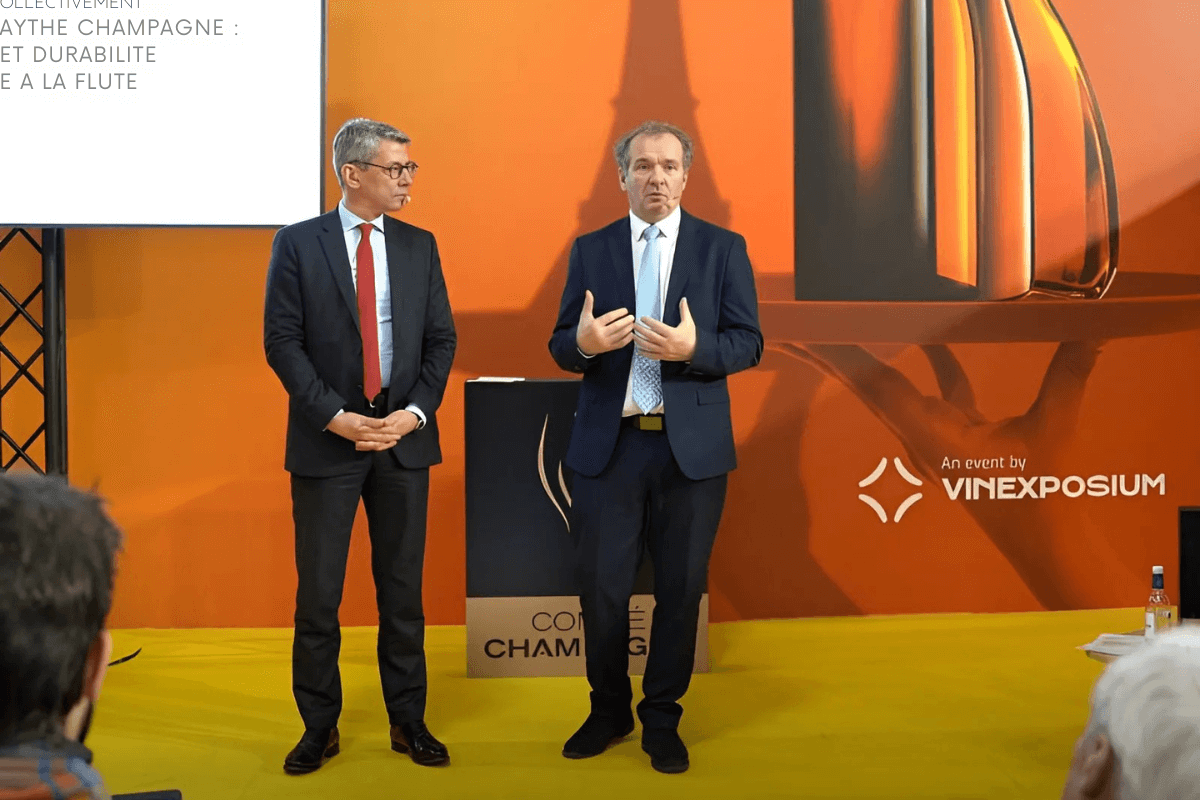
Image: Champagne in force at Wine Paris 2025 - From (L-R) David Chatillon, Président - Union des Maisons de Champagne and Maxime Toubart, President of the Syndicat Général des Vignerons de la Champagne.
Conclusion:
As the global wine industry navigates shifting consumer expectations, the challenge for Champagne is not just about adapting its product but also about expanding its presence in new markets and occasions. Rather than focusing on altering Champagne itself, Maxime Toubart highlights the importance of understanding evolving consumption patterns and identifying fresh opportunities for engagement. Whether through education, cultural relevance, or exploring new regions, the future of Champagne depends on proactive conversations and strategic action.
The key takeaway? Growth doesn’t always mean reinvention. By embracing discussions on emerging trends while staying true to its identity, Champagne can continue to thrive in an ever-changing world.
In conversation with Malvika Patel, Editor and VP, Beverage Trade Network
[[relatedPurchasesItems-61]]
Also Read:
Paul Baldi on Why Champagne Deserves the Spotlight in Restaurants
Around the World at WineParis 2025
Bubbles Beyond Champagne: Exploring Undervalued Alternatives

